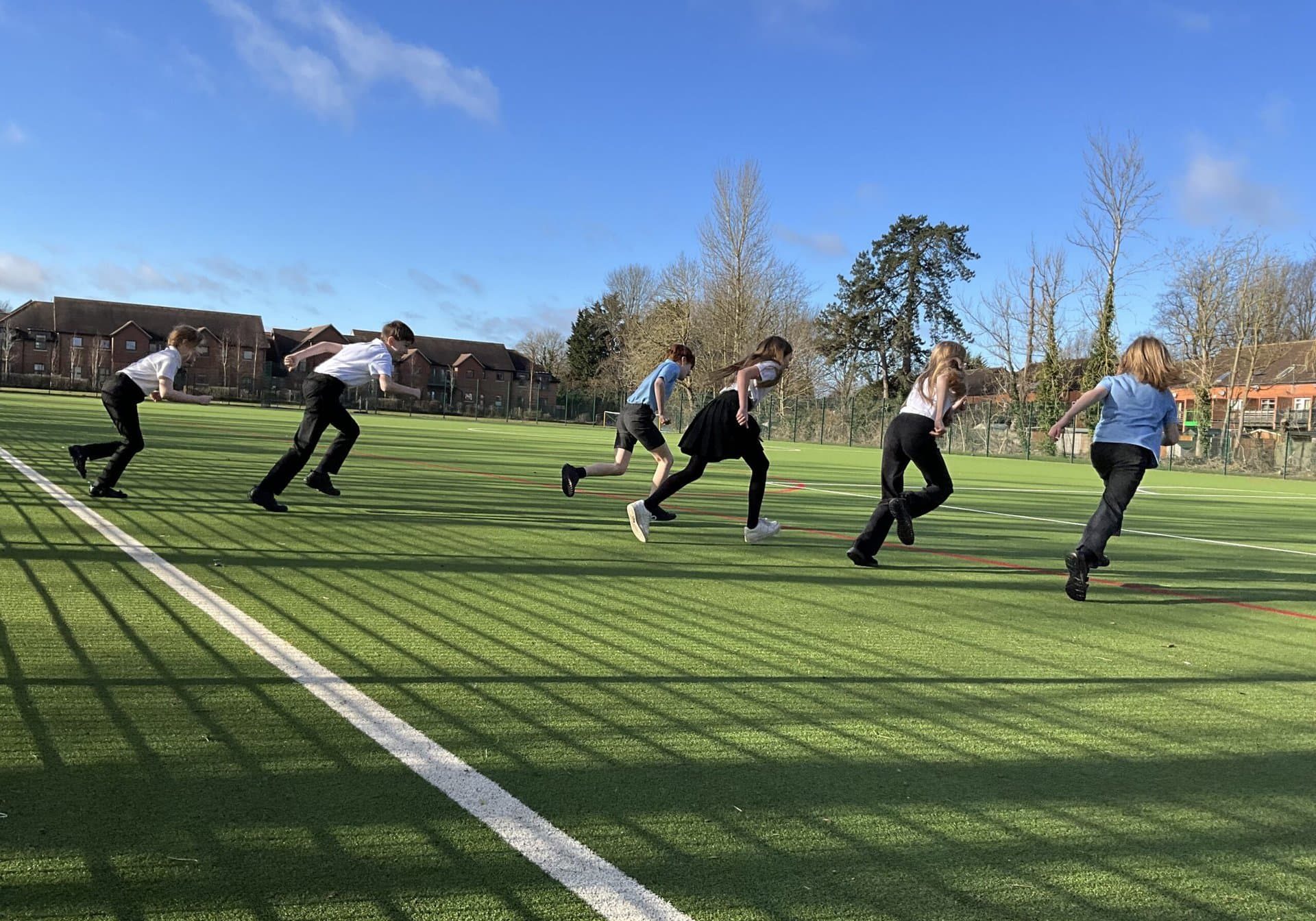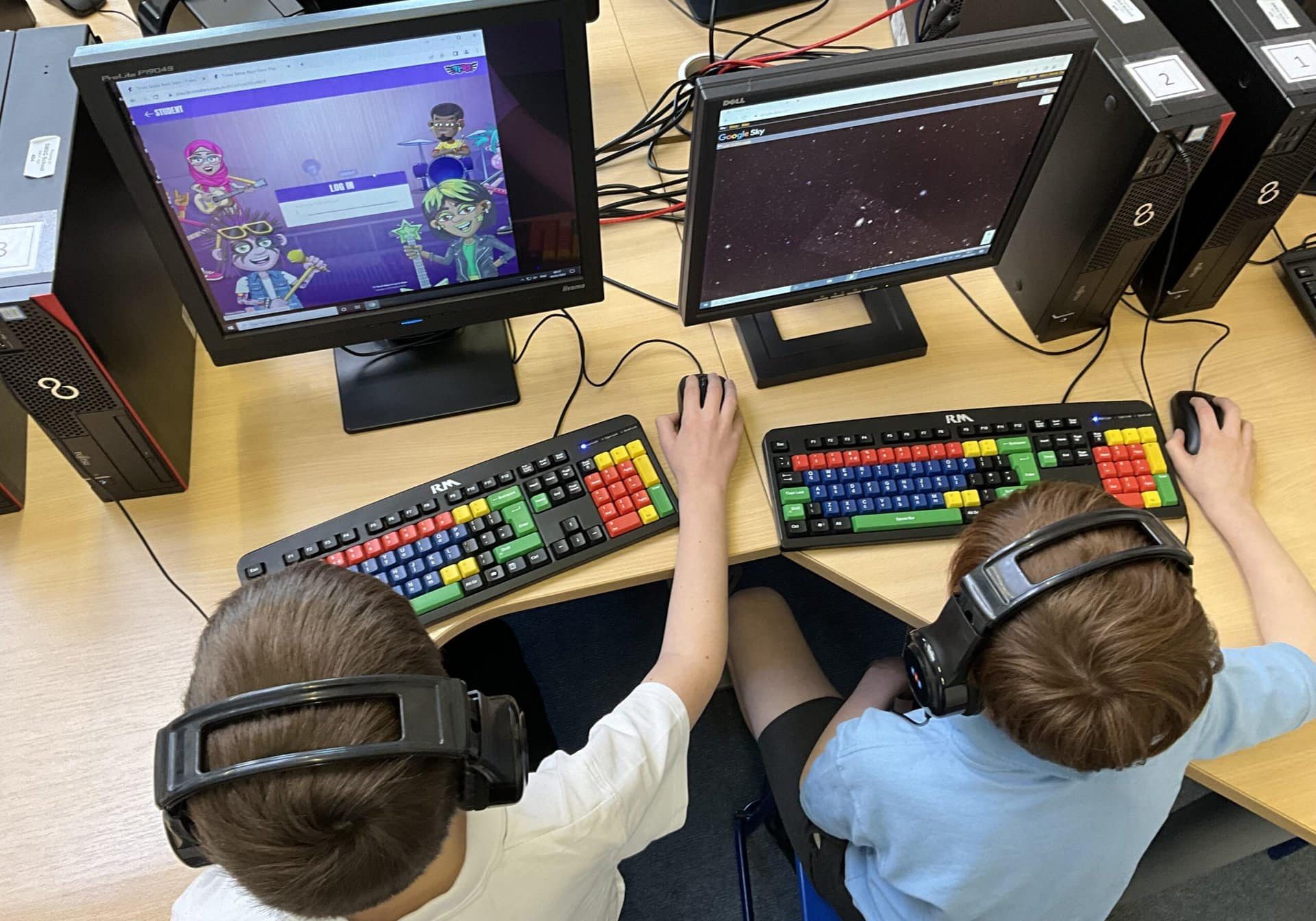Computing
We want all children to be masters of technology here at St Mary and St Giles; not slaves to it! Technology is everywhere and is used daily, therefore we want to model and educate all children on how to be creative when using technology positively and safely.
We learn how to code, create and debug algorithms, program, sequence, and use tools provided to research, create, save, edit and present using digital literacy. These skills enable learners to participate more readily in the rapidly changing world we live in today. From using devices in a variety of lessons, to making and editing their own creations, we do it all! We have a particular focus on internet safety and take part in the annual Safer Internet Day in February. We show benefits and drawbacks of screen time and teach children to take responsibility for their own learning both in school and at home when using computers.
Our aim is to build confident, competent learners with the ability to use technology purposefully and respectfully to further their learning, whilst developing logical reasoning which can be applied to every-day life. Our knowledge rich curriculum has to be balanced with the opportunity for children to apply their knowledge creatively which will in turn help our pupils become skillful computer scientists. Finding the right balance with technology if a difficult task, one which we take seriously. We understand that having that balance will enable confident, ambitious learners with a unique, creative flare.
As a school, we participate in computing lessons, and use devices and aspects of computing within all of the curriculum. We want learners to discuss and reflect on the impact computing has in their lessons and outside lessons, looking at well-being and development.
Useful Documents
| Term | Key Stage | Definition |
|---|---|---|
| Algorithm | 1&2 | A precise set of ordered steps that can be followed by a human or a computer to achieve a task |
| Attribute (property) | 1&2 | A word or a phrase that can be used to describe an object such as its colour, size, or price |
| Browser | 2 | SEE: Web browser |
| Code | 1&2 | The commands that a computer can run |
| Code snippet | 1&2 | A section of a program viewed in isolation |
| Command | 1&2 | A single instruction that can be used in a program to control a computer |
| Computer | 1&2 | A programmable machine that accepts and processes inputs and produces outputs (input, process, output; IPO) |
| Computer network | 2 | A group of interconnected computing devices |
| Computer system | 2 | A combination of hardware and software that can have data input to it, which it then processes and outputs. It can be programmed to perform a variety of tasks. |
| Condition | 2 | A statement that can be either True or False |
| Condition-controlled loop | 2 | SEE: Loop (condition-controlled) |
| Count-controlled loop | 2 | SEE: Loop (count-controlled) |
| Data | 1&2 | A letter, word, number etc. that has been collected for a purpose, but stored without context |
| Data set | 2 | A collection of related data |
| Debugging | 1&2 | The process of finding and correcting errors in a program |
| Decompose | 2 | To break down a task into smaller, more achievable steps |
| Digital device | 2 | A computer or a device with a computer inside that has been programmed for a specific task |
| Domain name | 2 | The part of a website’s URL that is user friendly and identifies that it is under the control of a particular person or organisation e.g. raspberrypi.org |
| Execute (run) | 2 | SEE: Run |
| Hardware | 2 | The physical parts of a computer system |
| HTML (HyperText Markup Language) | 2 | A standardised language used to define the structure of web pages |
| Hyperlink | 2 | (Also: link, weblink) Text or media that when clicked, takes the user to another specified location (URL) |
| Infinite loop | 2 | SEE: Loop (infinite) |
| Information | 1&2 | Data put into a context that provides meaning |
| Information technology | 1 | The study, use, and development of computer systems for storing, processing, retrieving, and sending information |
| Input | 2 | Data that is sent to a program to be processed |
| Input device | 2 | A piece of hardware used to control, or send data to, a computer |
| Internet | 2 | The global system of interconnected computer networks |
| Loop | 2 | (Count-controlled, condition-controlled, or infinite) Commands that repeatedly run a defined section of code |
| Loop (condition-controlled) | 2 | A command that repeatedly runs a defined section of code until a condition is met |
| Loop (count-controlled) | 2 | A command that repeatedly runs a defined section of code a predefined number of times |
| Loop (infinite) | 2 | A command that repeatedly runs a defined section of code indefinitely |
| Network | 2 | SEE: Computer network |
| Object | 1 | Something that can be named and has other attributes (properties), which can be labelled |
| Object | 2 | Something that is uniquely identifiable and has attributes |
| Output | 2 | The result of data processed by a computer |
| Output device | 2 | A piece of hardware that is controlled by outputs from a computer |
| Procedure | 2 | A named set of commands that can be called multiple times throughout a program. This type of subroutine does not return a value. |
| Process | 2 | A program, or part of a program, that is running on a computer |
| Program | 1&2 | A set of ordered commands that can be run by a computer to complete a task |
| Property (attribute) | 1 | A word or a phrase that can be used to describe an object such as its colour, size, or price |
| Repetition | 2 | Part of a program where one or more commands are run multiple times in a loop |
| Router | 2 | A device that manages the flow of data between computer networks |
| Run (execute) | 1&2 | To action the commands in a program |
| Selection | 2 | Part of a program where if a condition is met, then a set of commands is run |
| Server | 2 | A networked computer that manages, stores, and provides data such as files to other computers |
| Software | 2 | The programs used to control computers and perform specific tasks |
| Stored (data) | 2 | Data kept digitally so that it can be accessed by a computer |
| Subroutine | 2 | A named sequence of commands designed to perform a specific task |
| Switch (network switch) | 2 | A device that manages the flow of data packets within a computer network |
| Technology | 1 | The use of scientific knowledge for practical purposes |
| URL (Uniform Resource Locator) | 2 | The address of a file on the internet |
| Variable | 2 | A named piece of data (often a number or text) stored in a computer’s memory, which can be accessed and changed by a computer program |
| Web | 2 | SEE: WWW (World Wide Web) |
| Web address | 2 | SEE: URL (Uniform Resource Locator) |
| Web browser | 2 | A program used to view, navigate, and interact with web pages |
| Web page | 2 | A HTML document viewed using a web browser |
| Website | 2 | A collection of interlinked web pages, stored under a single domain |
| WiFi | 2 | A technology that allows devices to wirelessly access a network and transfer data |
| WAP (Wireless Access Point) | 2 | A network device that allows wireless computing devices to connect to a wired network |
| WWW (World Wide Web) | 2 | A service provided via the internet that allows access to web pages and other shared files |





